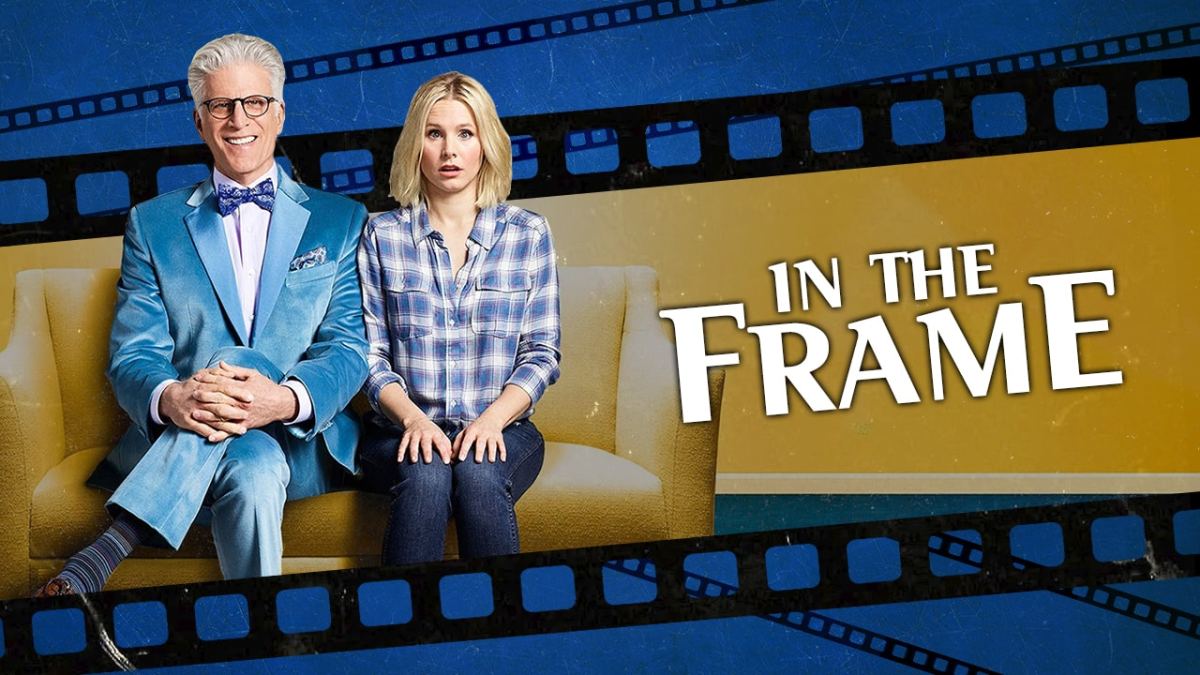This article contains spoilers for The Good Place.
There has been a lot of discussion about utopian and dystopian storytelling in recent years and months, as well as a debate about what utopian storytelling even looks like.
It’s notable that a lot of our modern futuristic science fiction is defined by either recycled hand-me-down futures from earlier generations or by visions of apocalypse and revolution. When Star Trek: Picard premiered, there was some vocal frustration that the series did not extend the utopian idealism of Star Trek: The Next Generation, instead opting to reflect the turbulent present.
There’s an extent to which this pessimism makes sense, reflecting the general mood of the time. If The Next Generation is a show that spoke to the optimism of post-Cold War prosperity, then Picard speaks to the anxieties of a world that has allowed that optimism to curdle and slip away. However, there’s an understandable yearning for optimism and hope in these trying times.
In many ways, the television of Michael Schur feels like a logical and organic successor to the optimism and humanism that defined The Next Generation. Schur is one of the most quietly successful television producers of the modern era, lacking the star profile of contemporaries like Shonda Rhimes or Ryan Murphy and the cable era freedom of creators like David Simon or David Milch.
Schur works in network television, which is often overshadowed by discussions of prestige cable offerings like HBO or streaming service opulence like Netflix. More than that, Schur works within the format of the half-hour sitcom. It is one of the most reliable old standards of American television, but it seldom gets the same respect or attention as the punchy hour-long drama.

Nevertheless, taken together, Schur’s work on shows like Parks and Recreation, Brooklyn Nine-Nine, and The Good Place offers a taste of that warmth and humanism that is absent from so much of contemporary pop culture. At their core, these are fundamentally stories about hard-working and decent people who are doing their best to make the world a better place, whether at a community or existential level.
To be fair, the positioning of these shows as half-hour sitcoms probably helps. By its nature, the sitcom format lends itself to optimism. Network sitcoms are designed to make their audiences feel good about themselves. This is why shows like Seinfeld and It’s Always Sunny in Philadelphia stand out within the genre, playing with that expectation by injecting cynicism into the mix for contrast.
There’s nothing wrong with optimism and idealism. Indeed, one suspects that a yearning for that sort of feel-good worldview is a large part of why so many of Schur’s shows take on a second life on streaming services. Of course, classic ’90s sitcoms like Friends are also huge hits on Netflix. It’s not just nostalgia; new younger audiences are discovering these shows anew.
It might seem odd to compare a 45-minute syndicated science fiction show like The Next Generation to a half-hour network sitcom like Brooklyn Nine-Nine or The Good Place. However, that’s a very genre-defined way of looking at what The Next Generation was, instead of looking at its essence. The Next Generation might not be a sitcom, but it is fundamentally a workplace show.
The producers originally hoped to put a conference table in the middle of the bridge. This idea was eventually abandoned, but much of The Next Generation unfolds in staff briefings. Characters sit around a big table and talk out their approach to solving the problem of the week. Even the captain’s ready room is just a smaller office. Deanna Troi (Marina Sirtis) is essentially an idealized HR person.

It’s notable that superfan Seth MacFarlane’s own tribute to The Next Generation, his science fiction series The Orville, is structured in part as a workplace sitcom. Paralleling the two shows, MacFarlane explained “what I always loved about the best days of Star Trek was it felt more like people working in an office than a military crew on a ship.” It’s an astute observation.
Schur’s comedies are populated by funny characters, but they inevitably focus on people who pull together to accomplish something important. It’s notable that both Parks and Recreation and Brooklyn Nine-Nine are set in institutions that are designed to serve the public, but that have often failed in those obligations in the real world. There’s a genuine idealism that shines through.
Parks and Recreation is set in the sort of government department that is often portrayed or perceived as a suffocating bureaucracy disconnected from the common citizen. In contrast, the series focuses on much-maligned civil servants who work to better their community, through debate and reason. It is a very utopian depiction of how local government should work.
Asked what Leslie Knope (Amy Poehler) would be doing during the coronavirus pandemic, Schur insisted that she would be proactive in looking out for the people under her care. In a world where so many governments have been sluggish in their response to the crisis, the optimism of a show that ended half a decade ago still stands out.
Brooklyn Nine-Nine operates in a similar space. It is a workplace sitcom set within a New York City police department. The series was on the air at a time when American police departments were subject to intense criticism for their lack of accountability and their use of force. However, Brooklyn Nine-Nine is consistent with depicting its characters as serving and protecting their community.

Detective Jake Peralta (Andy Samberg) is a goofus, but he is very good at his job and takes pride in that. The characters might mess around, but they take their responsibilities seriously. Brooklyn Nine-Nine has even tackled issues around real-life policing, most notably in episodes like “Moo Moo,” when African American Sergeant Terry Jeffords (Terry Crews) is racially profiled by two police officers.
The Good Place elevates this philosophy to an existential level. It focuses on a group of recently deceased characters consigned to eternity in “the Bad Place.” As they try to escape, they eventually discover that nobody has been admitted to “the Good Place” in a very long time. Using the metrics that measure morality, it is literally impossible to be a good person in the world.
Instead of accepting this fundamentally broken system that condemns every living soul to an eternity of torture (possibly including “butt spiders” and “dank memes”), our heroes set out to fix things. Along the way, they each become better people. The Good Place is a show with an endearing optimism in humankind’s capacity to improve and grow. Everyone can become a better person.
These shows are all fundamentally idealistic. It’s notable that Brooklyn Nine-Nine and The Good Place both retained this utopianism in an era when the public mood has become increasingly cynical and antagonistic, and that they have done so without completely disconnecting themselves from the uncertainties and anxieties of the real world. They are bursts of hope in a cynical time.
The Next Generation often adopted a similar approach. The crew would find themselves as lone bastions of Federation idealism on the frontier, with Starfleet trying to dismantle Data in “The Measure of a Man” or separate Data from his daughter in “The Offspring.” The Next Generation was populated by authority figures who betrayed the trust placed in them, with only Picard and his crew embodying the best of humanity.
The Next Generation spoke to the optimism of the 1990s. The Star Trek franchise has been dealing with the collapse of that optimism since the launch of Enterprise in September 2001. This is entirely valid, and it’s notable that shows like Enterprise, Discovery, and Picard eventually found their way to some sort of optimism.
Still, it’s reassuring to see that utopianism lives on, in surprising and unexpected places.






Published: Apr 6, 2020 11:00 am